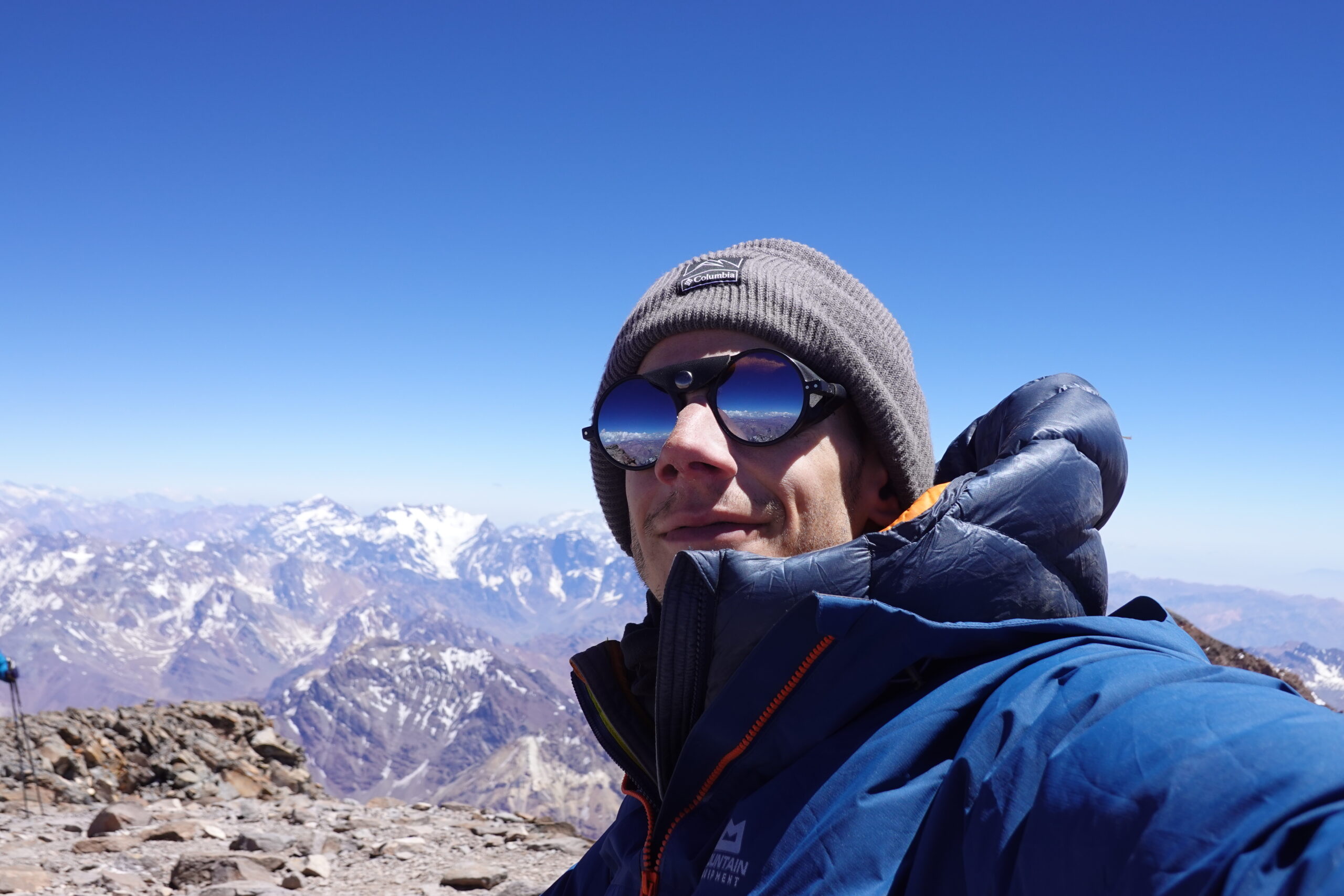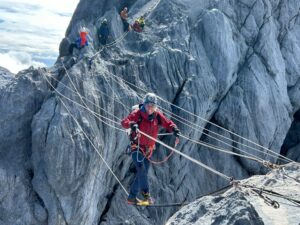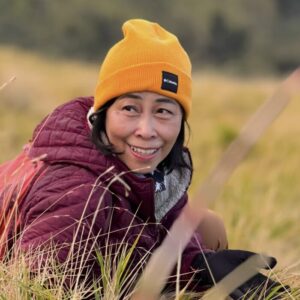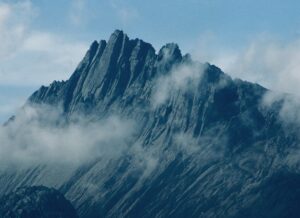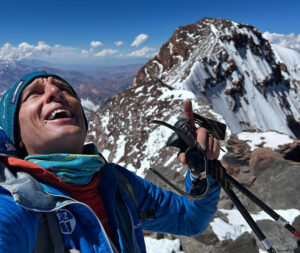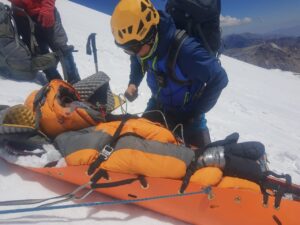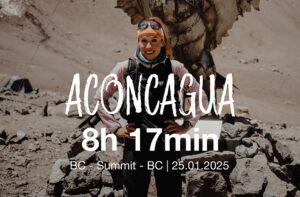Climbing the Seven Summits may be a great personal experience but it’s no longer a notable mountaineering achievement. However, Madalin Cristea — everyone knows him as Cris — has concocted a radical way to enhance the challenge.
Cristea is starting each of the seven climbs from sea level. He hikes to the mountain, climbs it, then hikes back to the nearest ocean. This year, he has already tagged Aconcagua and Kilimanjaro.
Cristea was born in Romania and has hiked since he was a child. He eventually moved to the UK and started working. Eventually, Bear Grylls’ book Mud, Sweat, and Tears inspired him to begin this project.
At first, he was just going to climb the Seven Summits, but then he noticed that this had become very popular. He cast about for a way to do it in style. The sea-to-summit idea came to him during the COVID months.
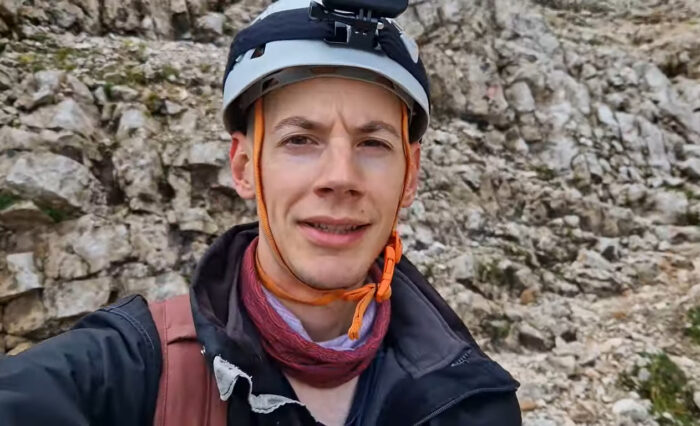
Cristea during a training climb up a via ferrata in Slovenia’s Julian Alps. Photo: @traintosummit
Since then, Cristea has been training and saving to support this “most terrifying adventure.” Check how the project was born in a documentary on his YouTube channel, @traintosummit.
Aconcagua and Kilimanjaro
He began on Jan. 1, 2024, from the Pacific Ocean at Concon, Chile. It took him seven days to trek to Aconcagua National Park. There, he linked up with his wife, Viviana Cristea, who was going to climb with him. In the end, she had an injury and couldn’t continue, but Cristea summited on Jan. 19. He then walked back to Concon in nine days. There and back, he covered 500km across Chile and Argentina.
“Only a few days later (Feb. 3), Cris set off for Tanzania,” Viviana Cristea wrote. “He took four flights and an eight-hour bus to reach the town of Tanga, the closest point to Kilimanjaro from the sea. He then walked across Tanzania for 11 days, staying in small villages and even camping on the side of the road.”
Again, she waited for him in Moshi, at the entrance to Kilimanjaro National Park. The couple then climbed the Umbwe route together in six days. Afterward, Cristea walked back. He totaled 800km for the African stage of the project.
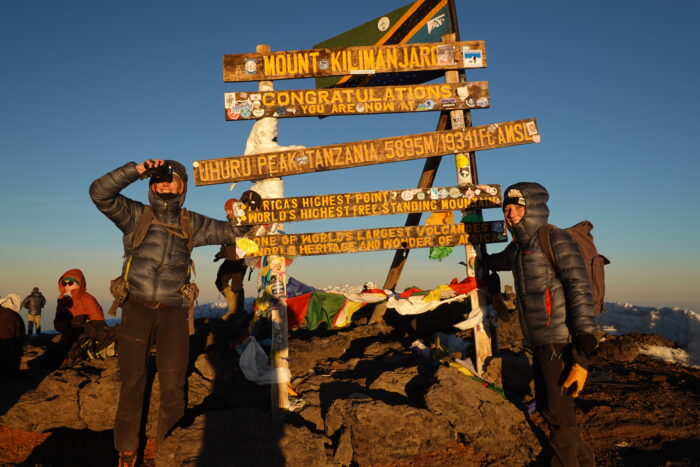
The Cristeas on the summit of Kilimanjaro. Photo: @traintosummit
On both occasions, he walked alone and unsupported, but things will have to be different on his next challenge: Everest, which he plans for 2025.
For Everest, Cristea will start in Digha, West Bengal, and then walk into Nepal from there.
“We are now trying to sort out the logistics, as this one will need a support vehicle to accompany him,” Viviana Cristea told ExplorersWeb.
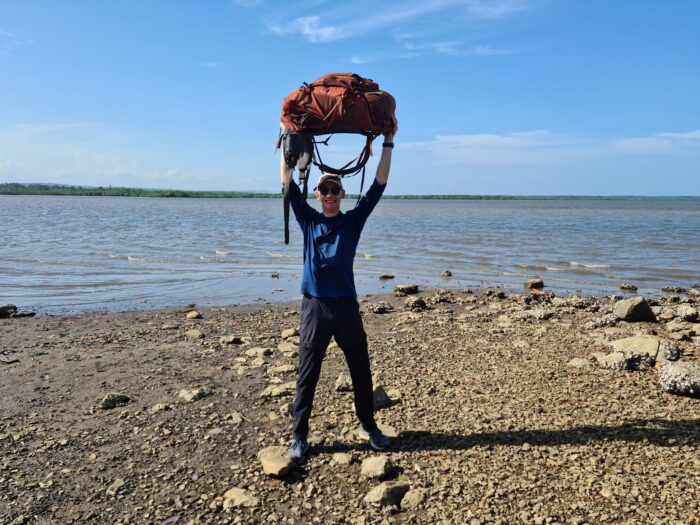
The starting point and finish line. Photo. @traintosummit
Other auto-powered Seven Summiters
Perhaps unsurprisingly, he is not the only one doing a human-powered Seven Summits from the ocean. Satoki Yoshida of Japan and Dave Williams of New Zealand are doing something similar. Yoshida has already succeeded on Denali, Aconcagua, Kilimanjaro, and Elbrus. Williams combined running and trekking on his summit climbs of Aconcagua, Kilimanjaro, Elbrus, and Kosciuszko. He then attempted Denali unsuccessfully. It seems he is not currently active in trying to complete the project. In addition, both Williams and Yoshida “only” walk from the ocean to the summit, but not the way back.
Jelle Veyt of Belgium has pursued a similar adventure for several years. Veyt wants to complete an exclusively human-powered Seven Summits. He cycles, rows, sails, or hikes. Veyt summited Elbrus in 2013, Everest (on his third attempt) in 2016, Carstensz Pyramid in 2019, and Kilimanjaro in 2021.
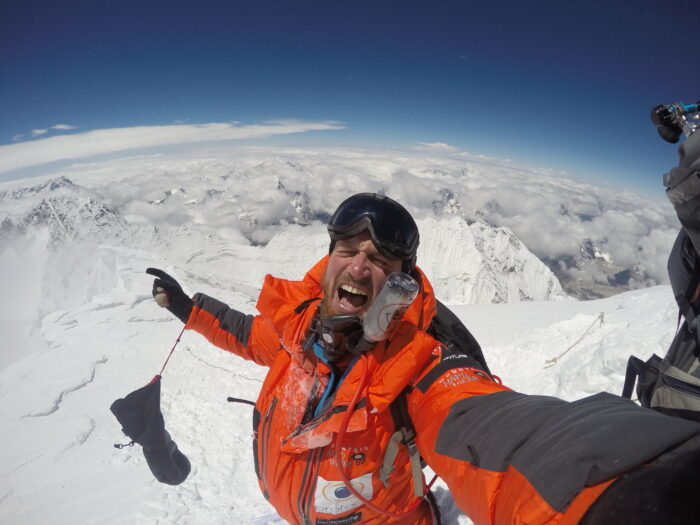
Veyt celebrates on the summit of Everest. Photo: Jelle Veyt
Currently, he is on his second attempt to Denali. According to his tracker, he is back in Base Camp after a first failed summit attempt.
